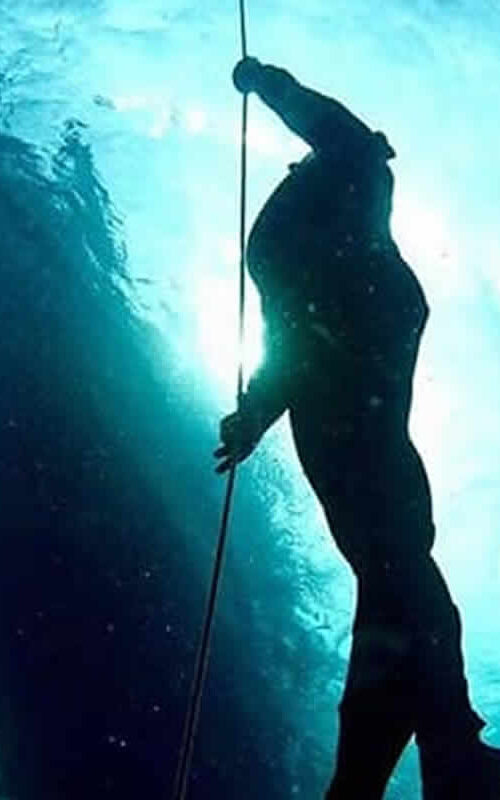The 50-meter mark was first breached in 1962 by Freediver Enzo Maiorca; his rival Jacques Mayol hit 100 meters 14 years later. As the sport developed and gained popularity, divers began incorporating fins, weights, inflatable balloons and diving sleds, going ever deeper. In 1992, the International Association for the Development of Apnea (AIDA) was established to set global standards and verify free diving records.
In no-limit free diving, the diver uses a weight sled to descend to a predetermined depth, at which point he or she activates an inflatable balloon to return to the surface. If this seems like cheating, think about the fact that to descend to the current deepest mark of 214 meters, freediver Herbert Nitsch went 4 minutes, 24 seconds without taking a breath. This is not a sport for the weak of heart, or lungs. In the last decade, free diving has reached new depths.
Have you ever wondered how long you can hold your breath for? The longest time holding the breath underwater was 22 min exactly by a Danish guy called Stig Severinsen at the London School of Diving in London, UK, on 3 May 2012.
What about how deep you could dive without a tank and just a lung full of air? Natalia Molchanova of Russia’s national team recently made a new world diving to a depth of 237 meters in dynamic apnea, that’s nearly 5 lengths of an Olympic sized swimming pool!
Do you think you could do better? Or would you like to give freediving a try, maybe you are unable to scuba dive but would still like to experience the underwater world, then Big Blue Freediving could be just for you, courses are scheduled for your needs and can be booked ahead of time. If you would like more information on freediving just drop us an email at [email protected]
If you want to get involved in the fastest growing watersport in the world today then give us a holler or check out our website for the Freediving options we offer here at Big Blue Freediving.
